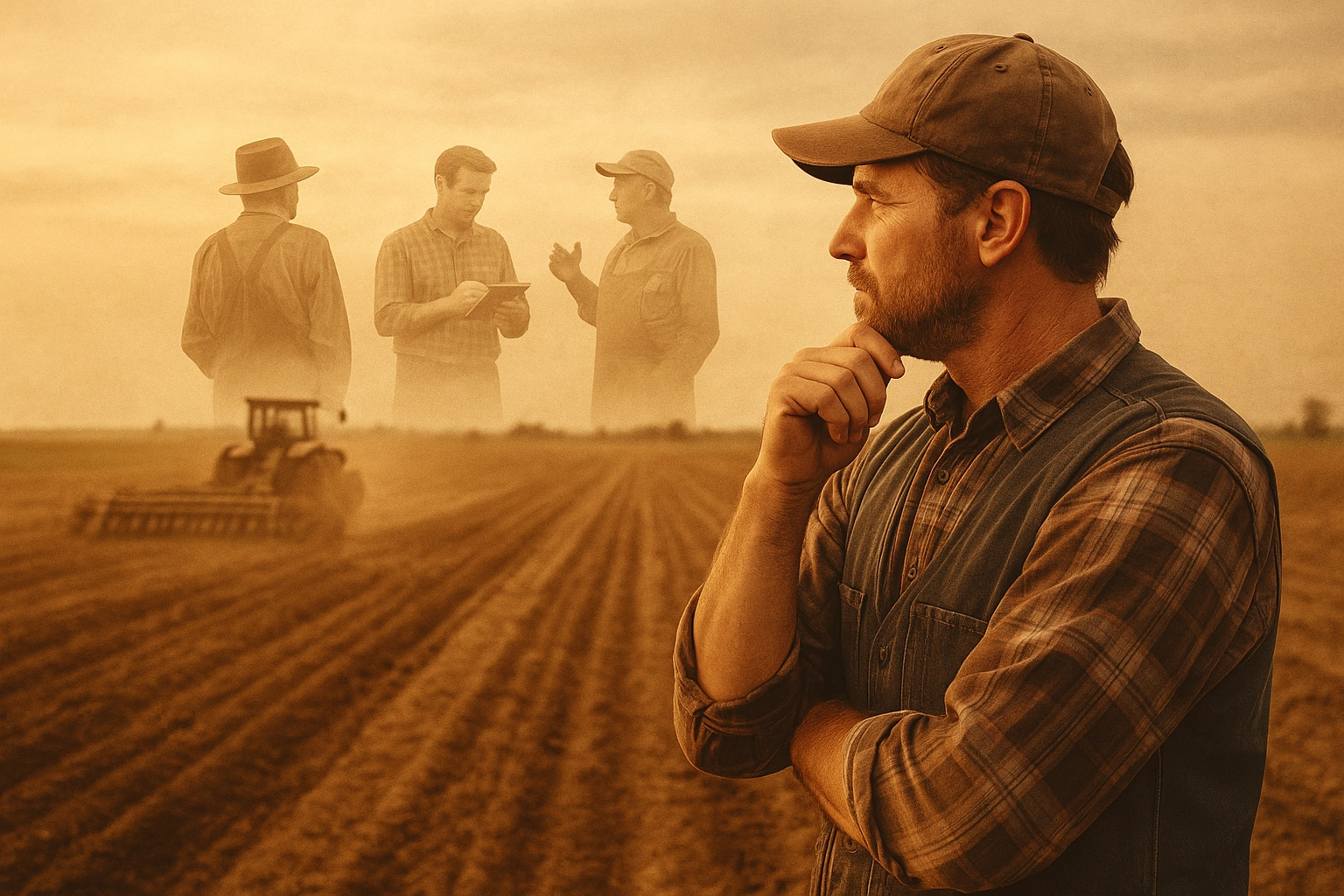
Where Intent Lives
By Godard, PhD
CEO and Co-founder | Verge Ag
In 1972, two Stanford psychologists, John Bransford and Marcia Johnson, ran an experiment that at first seemed destined to fail.
They handed groups of students a short, 12-sentence passage to read. The sentences described ordinary actions: gathering items, sorting them, repeating steps over and over. But there was a catch. The passage never said what the activity was about.
When students were later asked to recall what they had read, most could remember almost nothing. The words had slipped through their minds like water through a sieve.
Then Bransford and Johnson made a tiny change. Before reading the passage, another group of students was told just one line: "This passage is about doing laundry."
That one clue changed everything. With context, students remembered twice as much of the passage. The meaning gave the sentences weight.
The bare facts hadn't changed, the words were the same, but the intent behind them transformed memory itself.
That same truth plays out in agriculture every day.
A farmer doesn't plant the corner of a field at an angle by accident. He does it because his grandfather knew that angling across the slope slowed runoff and held the soil in place after heavy rains.
Machines can record facts. They can log coordinates, measure rates, and trace lines. But they cannot, on their own, recall intent. And if we don't find a way to capture that, autonomy in agriculture won't just be blind. It will be forgetful.
The Memory of the Field
When we talk about autonomy in agriculture, most people focus on machines. The sensors. The algorithms. The hardware arms race.
But machines don't farm. Farmers do.
And farmers don't make decisions in a vacuum. They inherit them. A headland looks uneven because a father once found it saved time when swapping implements. A corner is planted off-angle because a grandfather knew it would hold the soil.
These aren't inefficiencies. They're intent. The memory of the field.
The trouble is, until now, intent has lived only in people, through habits, conversations, and instincts passed down. Which means it has also been disappearing.
Beyond Steering
Look at how most equipment companies frame the problem.
They talk about autonomy as if it were simply about steering.
How to get a machine from point A to point B. But knowing how to drive has never been the issue. Machines have steered themselves for decades.
The real problem is why.
- Why do you enter a field here and not there?
- Why do you overlap a little on this edge of the field and not on that one?
- Why do you prioritize erosion control one season and speed the next?
These aren't arbitrary choices. They're intent, the hidden layer that makes farming work. And without capturing intent, autonomy is blind.
Grower Intelligence
At Verge, this is where we begin.
We don't just capture lines in a field.
We capture the thinking behind them.
We refer to it as Grower Intelligence, the inheritance of knowledge, preferences, and decisions that guide every operation.
This intent is not just decision support. It's decision timing. It's moving critical choices upstream, before the tractor enters the field, so autonomy isn't guessing on the fly.
It's also a structure for spontaneity, because growers will always need the freedom to adapt, but that freedom is more powerful when it's built on a prepared plan.
That's why we designed our technology to be more than just off-the-shelf software. It's a system for translating intent into action. Field by field, plan by plan, so that autonomy doesn't erase intelligence, but amplifies it.
Preserving Lineage
If we fail to capture grower intent, we don't just lose efficiency. We risk losing lineage.
Every generation of farmers has carried forward a chain of decisions about soil, water, timing, logistics that no AI in the cloud could ever invent on its own. Break that chain, and we don't just lose methods. We lose farmers.
That's why Verge is building autonomy differently. Not by replacing the farmer, but by ensuring their intent becomes the foundation of autonomy itself.
Autonomy Experience Design
We call this Autonomy Experience Design.
It means putting growers, not machines, at the center.
It means autonomy that remembers, autonomy that adapts, autonomy that starts with intent.
Because the future of farming won't be written only in code or hardware, it will be written in memory. In decisions. In the intelligence that farmers have always carried.
At Verge, our job is to capture that intent and design the autonomy experience around it.
Experience Autonomy Built on Intent
Discover how Grower Intelligence preserves and amplifies your farm's knowledge
Get StartedOriginally published on LinkedIn